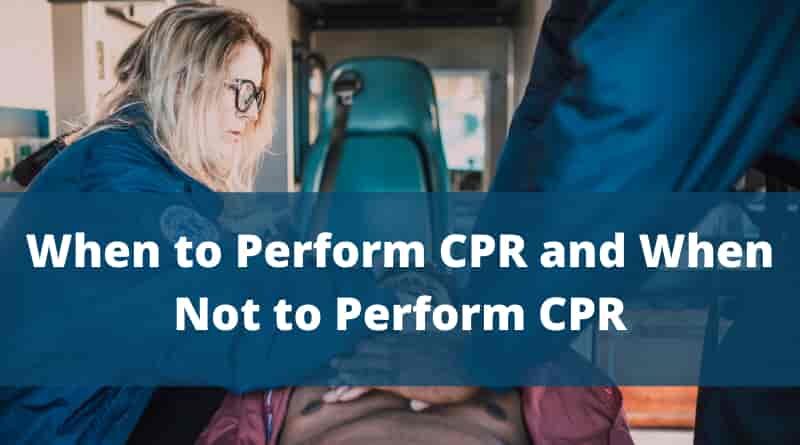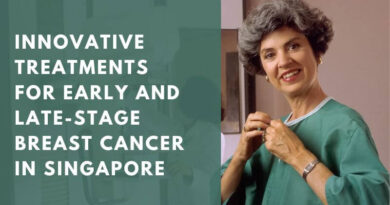When to Perform CPR and When Not to Perform CPR
CPR is a lifesaving procedure used for sudden cardiac arrests (SCAs) and other situations such as near-drownings. Though CPR can double or even triple a victim’s chances of survival, we are facing a scary shortage of CPR-certified bystanders.
When asked when to perform CPR, many people scratch their heads. Even worse, people are unclear on the steps to CPR and lack the necessary confidence to respond to these emergencies. Luckily, there are various ways to learn how to respond to CPR situations.
This article discusses when to perform CPR. However, while it contains numerous procedures for responding to CPR, there is no substitute for getting your CPR certification. You can either opt to do an in-person, blended, or online CPR certification class to learn your CPR certification. Doing so will give you the tools to respond to these emergencies quickly and decisively.
Table of Contents
How Can You Tell If Someone Needs CPR?
Judging whether someone needs CPR can be difficult. People don’t always display tell-tale signs. Others might appear to need CPR who don’t. On top of the potential to mistake some situations for requiring CPR, the situations that typically require CPR are highly fraught and it’s easy to have the adrenaline and fear cloud your judgment.
That’s why looking out for the following signs is critical. It helps you better prepare for these intense situations so you can feel confident in responding to emergencies requiring CPR.
They Are Not Breathing
If the person is not breathing, you should begin CPR. Without oxygen-enriched blood flowing throughout the body, the heart might stop beating, causing brain tissue deterioration. The average person can only last six minutes without oxygen before they start sustaining significant internal organ damage.
Read: First Aid Certificate
They Take Occasional Gasping Breaths
People can continue after going into cardiac arrest. However, if they start gasping for breath, CPR chest compressions should begin immediately.
The Heart Has Stopped
When you respond to an emergency, you should first check for a pulse. If the victim does not have a pulse, the heart isn’t pumping oxygen throughout the body. Chest compressions keep the blood flowing to the heart and brain until emergency responders can arrive on the scene.
The Person Is Unresponsive or Unconscious
If someone is unresponsive or unconscious, you should start performing CPR. Their condition can become unstable while they’re unconscious, and CPR can help them regain consciousness, thus keeping them breathing.
Read: Safe Working with Syringes and Needles
When You Should Start Chest Compressions
After determining whether someone requires CPR, you should start immediately. The longer you delay, the more likelihood of brain death—every second counts when you perform CPR.
Why Do People Need CPR?
The following examples provide some relevant examples of when you might need to perform CPR on a victim.
- Electrocution
- Near drowning
- Car accidents
- Sudden cardiac arrest
- Sudden collapse
When Should You Not Perform CPR
When deciding whether to perform CPR, you should familiarize yourself with when it’s inappropriate to perform CPR. In hazardous situations, it’s unwise to risk your life to perform CPR. In these cases, you should remove the person from the situation before beginning CPR.
In some cases, you should wait until emergency responders arrive.
Potentially Shady Situations
Criminals often prey on people by pretending to be injured or unconscious. Women should be especially cautious when evaluating the scene of a potential cardiac arrest victim, especially if they are alone.
The Person Is Still Breathing Normally
If the person is breathing normally, you should not perform CPR. Oxygen is still getting to the brain, and the heart is functioning properly. In these cases, call 911 and wait for emergency responders to arrive.
Read: Career Options for Nurses
CPR and Electrocution
When responding to a potential CPR situation, take note of your surroundings and examine whether there is a risk the victim was electrocuted. If the victim accidentally electrocuted themself, you risk electrocution if you try to perform CPR.
Signs That Someone Doesn’t Need CPR
If someone is lifeless or they keel over, there is a good chance you will need to perform CPR. However, several other conditions can make it appear that a victim needs CPR when they don’t.
Heart Attack Vs. Cardiac Arrest
Heart attacks don’t require CPR. In fact, they can make the situation worse. Heart attacks are much different from cardiac arrests. Cardiac arrest occurs when a person’s electrical signals controlling their heartbeat become interrupted or unsteady. The result is ventricular fibrillation, a spasming of the heart that causes it to stop.
On the other hand, heart attacks occur as a result of a blocked artery. The blocked artery stifles blood flow throughout the body and stresses the heart. Heart attacks do not respond to CPR because the heart is still pumping blood.
Performing Hands-Only CPR
When performing hands-only CPR, you should adhere to the following steps.
- Survey the scene- make sure the setting is safe for you to perform CPR.
- Check the person for responsiveness- Shake the person and ask loudly, “are you okay?” For an infant, you should tap the bottom of their foot to check for a reaction.
- If the person isn’t responsive, seek immediate help- Call 911 or emergency services immediately if the person isn’t responsive. You can also ask someone else to call 911 and begin performing CPR while they call.
- Use an AED- If you are with someone else, they should look for a nearby AED and you should use it on the victim once they locate it.
- Locate your hand position- hand positioning for CPR varies depending on whether you perform on an infant, child, or adult.
- Begin compressions- Perform chest compressions at 120 bpm at a 2” depth for a minute. Allow their chest to recoil in between compressions.
Conclusion
CPR is a potentially lifesaving technique that can restart the heart after suffering sudden cardiac arrest. However, there is a glaring need for more certified individuals. Finding a company that holds both in-person and online certifications will give you the most options to earn your CPR certifications at your own pace.
Earning your online CPR certification may save a life. With 395,000 sudden cardiac arrests occurring every year, there’s no telling when you might need to use your skills. Earning your nationally accredited CPR certification will equip you with the necessary tools to understand when to perform CPR.




